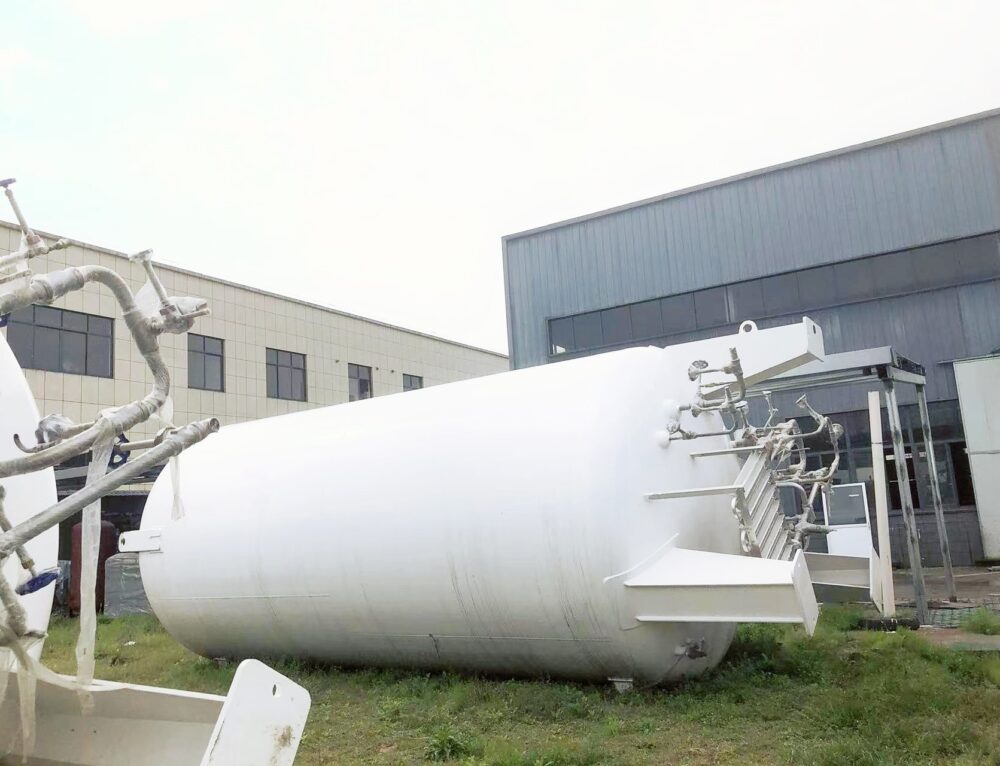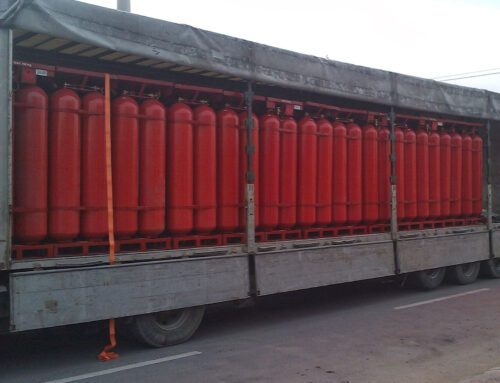Cryogenic liquid tanks are typically used for the transportation of chemicals, especially those with critical properties needed by a wide range of industries from petrochemical plants, to pharmaceutical companies and chemical manufacturers. Cryogenic liquids are usually liquefied gases with temperatures of -150 °C or below; oxygen is the most common byproduct. Cryogenic tanks are thermally insulated, usually with a vacuum jacket, and are developed and built to exacting standards in accordance with international design regulations. They may be stationary, mobile, or transportable. Non-pressurised open neck vessels (Dewar flasks) are available for applications needing direct access to the liquid. To suit the varied needs of the users, different sizes can be bought. A size range will be available with its selected pressure rating as well as flow rate within that range.
These tanks are available in all sizes, pressure, and flow rates. Cryogenic tanks are used to transport cryogenic liquids and are one of the most commonly used types of liquid transportation and storage containers in the industry.
Liquefied gases are utilized in a variety of industries, including metal processing, medical technology, electronics, water treatment, energy production, and food processing. Today, an increasing number of these industrial gases are supplied to clients in liquid form at cryogenic temperatures, allowing them to be stored on-site for subsequent use. Cryogenic tanks are used to keep cryogenic liquids safe. Cryogenic liquids are usually liquefied gases with temperatures of -150 °C or below. Oxygen, argon, nitrogen, hydrogen, and helium are all common byproducts. Cryogenic tanks may also be used to store liquified gases, such as liquefied natural gas (LNG), carbon dioxide, and nitrous oxide. These are gas used in a variety of industries such as metal processing, medical technology, electronics, water treatment, energy production, and the food industry. Cryogenic liquids are also utilized in low temperature cooling applications such as engineering shrink fitting, food freezing, and bio-sample storage.
Cryogenic tanks are thermally insulated, usually with a vacuum jacket, and are developed and built to exacting standards in accordance with international design regulations. They may be stationary, mobile, or transportable.
Static cryogenic tanks are intended for use in a permanent position; however, transportable compact tanks placed on wheels for use in workshops and labs are included. Because static cryogenic tanks are usually classed as pressure vessels, new tanks and their related systems will be built and installed in compliance with the Pressure Equipment (Safety) Regulations. Non-pressurised open neck vessels (Dewar flasks) are also available for applications needing direct access to the liquid. To suit the varied needs of the users, the tanks are available in a variety of sizes, pressures, and flow rates. Tanks used to transport cryogenic liquids must conform with the Carriage of Dangerous Goods and Use of Transportable Pressure Equipment Regulations.
Cryogenic tank use, operation, and maintenance
Cryogenic tanks must be operated and maintained in accordance with all applicable laws, such as the Pressure Systems Safety Regulations for static tanks and the Carriage of Dangerous Goods and Use of Transportable Pressure Equipment Regulations for transportable tanks. Cryogenic tanks must be maintained and handled by qualified individuals.
The Regulations require cryogenic tanks to undergo regular inspection, routine maintenance, and periodic formal examination for static tanks. An inspection and maintenance schedule should be developed to guarantee that the tank is in safe working order during official examination periods. This will comprise a Written Scheme of Examination to be developed by a competent person(s), as well as periodic formal exams to be held in line with the scheme.
Transportable tanks need periodic inspection and testing, which may only be performed by an Inspection Body authorized by the National Competent Authority, Department for Transport, in every country.
All inspections, exams, and tests are recorded, and records must be maintained throughout the tank’s entire life.
Cryogenic tank users and owners have legal obligations and a duty of care to ensure that their equipment is maintained and operated safely. A gas provider will only fill a tank after determining that it is safe to do so. Routine safety checks must be performed by the user. A little amount of icing and ice may be seen while in use. Small amounts of ice should not be a reason for worry, but the amount of ice should be checked on a regular basis. If ice continues to accumulate, de-icing should be performed to avoid excessive ice accumulation.
Repair and modification of cryogenic tanks
Any repair or modification to a cryogenic tank must be carried out exclusively by a qualified repairer in accordance with the design codes to which it was built, taking current rules and legislation into consideration. Such repairs or changes must not jeopardize the integrity of the structure or the functioning of any protective measures. All repairs and changes must be recorded and maintained on file for the life of the tank.
Revalidation of cryogenic tanks
Cryogenic tanks must be evaluated on a regular basis to verify that they are safe for ongoing use. A Competent Person shall determine the revalidation period, which shall not exceed 20 years. Because of the nature of their function, mobile tanks should be rented for a shorter length of time. When a tank is revalidated, a report is generated that must be maintained alongside the tank data for the duration of the tank’s life.
Cryogenic tank disposal
Because certain cryogenic tanks contain dangerous materials in their vacuum area, such as perlite, tanks should only be disposed of by a qualified and experienced disposal firm. As pressure equipment, all equipment must be made non-reusable.






